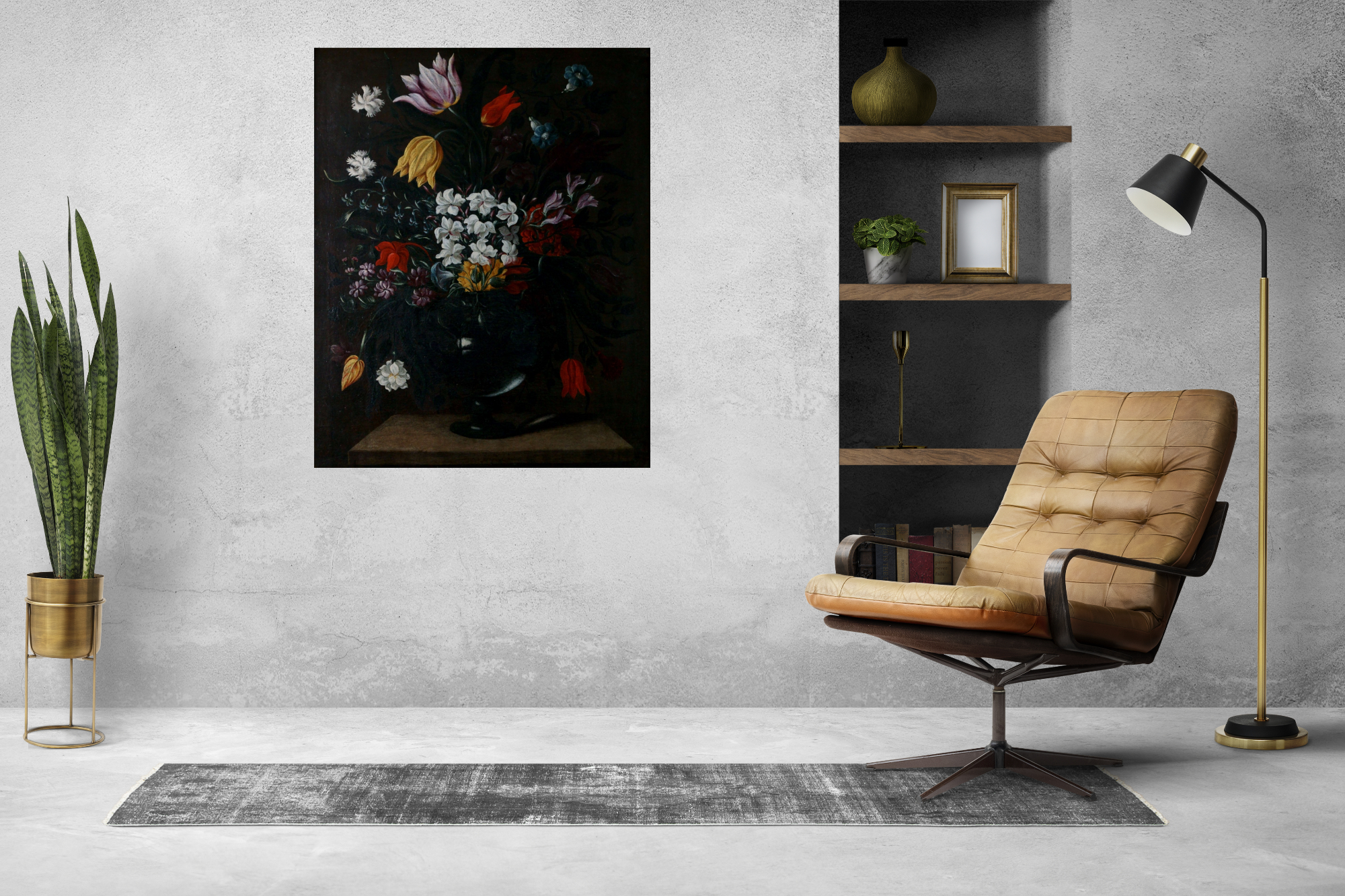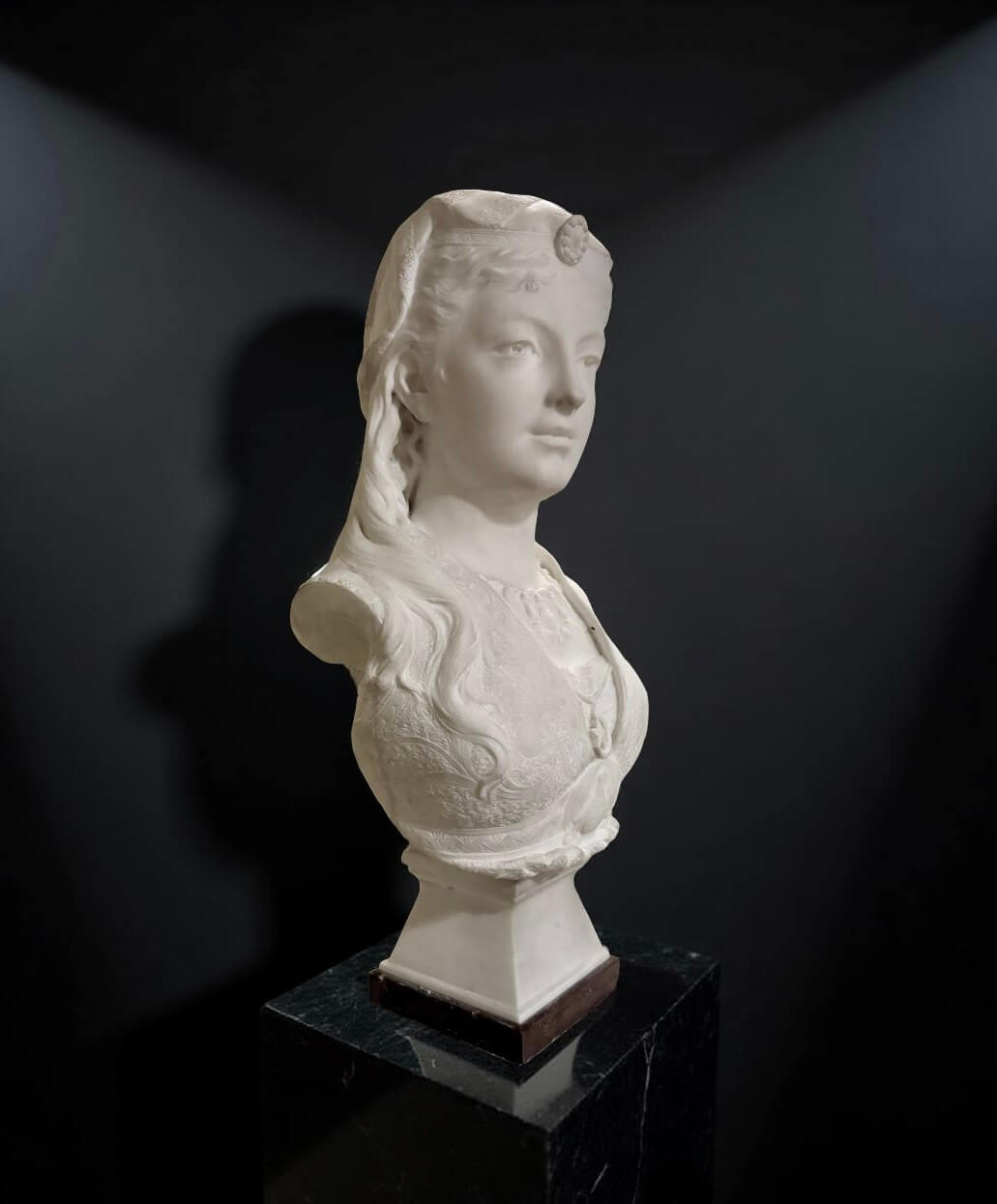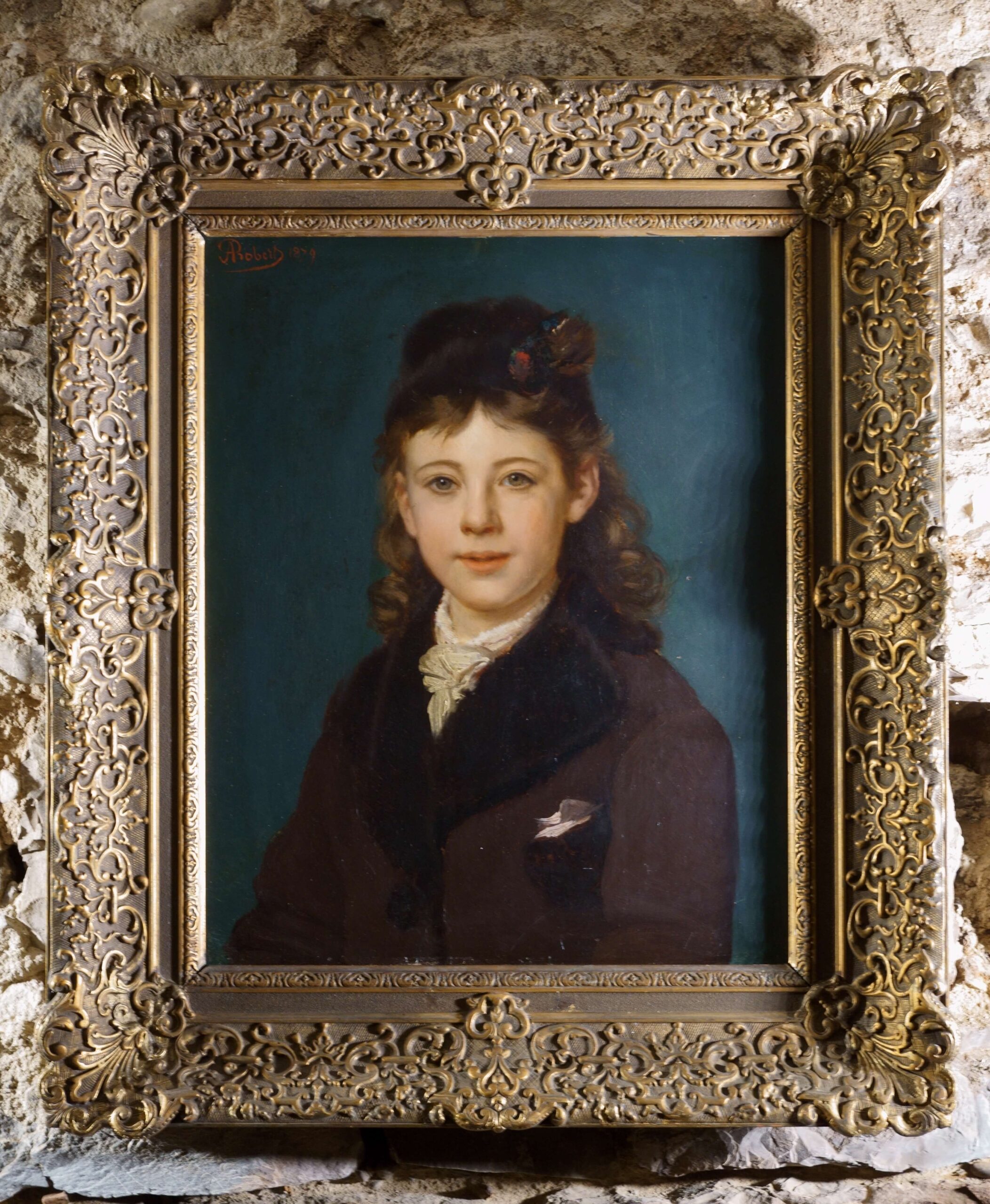Still Life, Glass Carafe with Flowers, Giacomo Recco (1603-1653).
This refined canvas represents a glass jug full of flowers resting on a stone base.
The rigorous simplicity of this painting takes us to the first half of the 17th century and to the name of Giacomo Recco
Giacomo Recco is considered by critics among the initiators of still life in Naples and the founder of a dynasty of painters specializing in still life, still sensitive to Mannerist taste and Flemish precedents, but able to warm and animate his compositions, with an imaginative “Neapolitan” style.
It is important to consider that in recent years, confirming once again the confusion that reigns in the attributionist field, numerous works have been sold at auction, more or less ceded by force to Giacomo Recco, who has thus become a painter without paintings, the reference artist of a crowd of anonymous authors of the most varied floral paintings, and whose coveted container of fiorante enters and exits the most disparate canvases. From the canvases attributed to Giacomo Recco by the most accredited experts not only emerges an artist of great skill and deep culture, but also an expert in heraldry and an expert in symbolic meanings, as well as a great connoisseur of figurative experiences Flemish. Also he was probably in the position of an established painter, able to be quoted in the circle that counts, like this one receiving commissions from important cardinals and noble families.
The works grouped under the name of Giacomo Recco have a series of very particular distinctive characteristics which are the expression of an artistic personality still attracted by the repertoire of the sixteenth century little or nothing affected by the results of the luminist investigations and at the same time strongly influenced by the affectation and the artificiality of the Flemish development.
In Recco’s painting, the vase becomes the focal point of the composition and has the same dignity with the flowers, always symmetrically arranged and unnaturally illuminated, even though minutely defined in their optical truth.
The flowers are all colorful expressions of early spring bloom: narcissi, hyacinths, calendula, anemones, tulips. They are detached from each other with some corollas pointing downwards and are studied separately even when they overlap, crowding against the dark background. The slightly calligraphic execution betrays an old air that reminds us of earlier examples.
The treatment of light is classic of a protocaravaggesco with punctilious attention to the exaltation of the chromatic values ??of the flowers, which are arranged schematically and materialize towards the viewer of the painting.
The artistic and cultural matrices of Giacomo Recco are difficult to define, even if we must consider the presence in Naples around 1590 of Jan Brueghel and the persistence in the city, as underlined by Tecce, of a seasoned handful of late mannerists, active until the middle of the third decade of the seventeenth century. A considerable influence undoubtedly stems from the growing renown for Europe of Nordic florists, linked to a decoratism still in taste from the 16th century, and quite fast from the lesson of Caravagic luminism which was beginning to shape genre painting in Rome. . The pictorial production that comes closest to the proofs of ours is that of Osias Beert the Elder, as pointed out several times in his Veca essays. The fame of Giacomo Recco is linked to his skill as a fiorante, almost a specialist in the specialty.
The painting is close to the oldest paintings by Recco, the sobriety, the symmetry, the centrality of these paintings. It can be compared with the canvas “Still life with vase of flowers” from 1626, Rivet collection in Paris, catalog La natura morta italiana, 1964, pag. 39.
The painting, although in excellent condition, has been restored to remove an old relining and bring the original canvas back to light, replacing it with a simple outline around the edges. The original frame had already been replaced at the time of relining.
In a 17th century Salvator Rosa giltwood frame.
Canvas cm 79 x 64
With frame cm 90 x 73




















